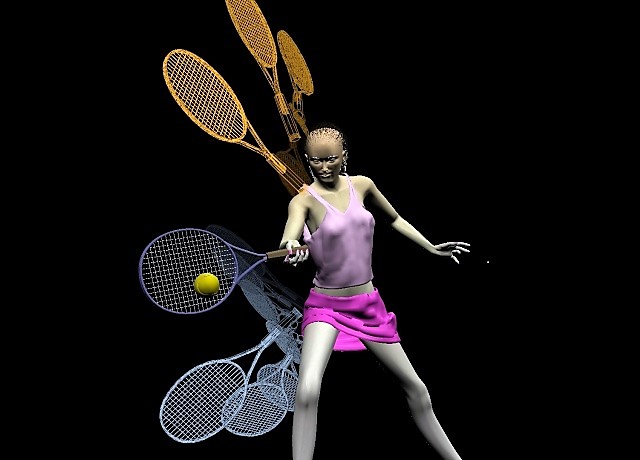The Propellerater
Why are we ordered by tennis gurus to step into the ball? None of the explanations they give us make any sense to me. Taking a step forward could not possibly add any considerable pace to the shot. The ball is already coming in at 50+ mph, and our racket is moving at 80+ mph, and walking speed (for me) is a miserable four mph. I have found that when I "get my weight into the ball" by moving in I get a lot more power, especially on the two-handed backhand. I also seem to get more solid hits and fewer miss-hits and shanks when I move into the ball. That is the telling observation. The truth is that strokes, particularly the groundstrokes, are not directed through the ball (i.e., in the direction of the hit) but are directed across the ball. Any attempt to hit directly through the ball is disastrous. Real control comes from a glancing blow, not a "spank" on the ball's bum. The racket moves like the blades of a propeller that is both rotating rapidly in a circle around your forearm but also moving forward into the ball slowly as its blades are slashing at high speed across the path of the ball. If you catch the ball with the blade of the propeller, the ball will take off, which is what we want.
Fine-Tuning Contact Timing
Traditionally, addressing the ball was thought to relate to the direction of travel and the direction of facing of the racket head leading up to the moment of contact. We were told to guide the racket to the ball along a path which coincides with the incoming flight path of the ball. We are even told to maintain that racket trajectory into the follow-through to compensate for possible mistiming of the ball. Mistiming the moment of contact was felt to be the principal threat to solid ball contact. We all constructively ignored evidence from watching the pros, who's strokes shared nothing with this admonition. Geniuses like Rod Laver slashed at the ball with an arcing, twisting motion and with apparent disregard for the incoming path of the ball, seeming to be somehow able to snatch the ball out of thin air and send it with unerring accuracy, vicious spin and blistering pace to whatever target they chose.

